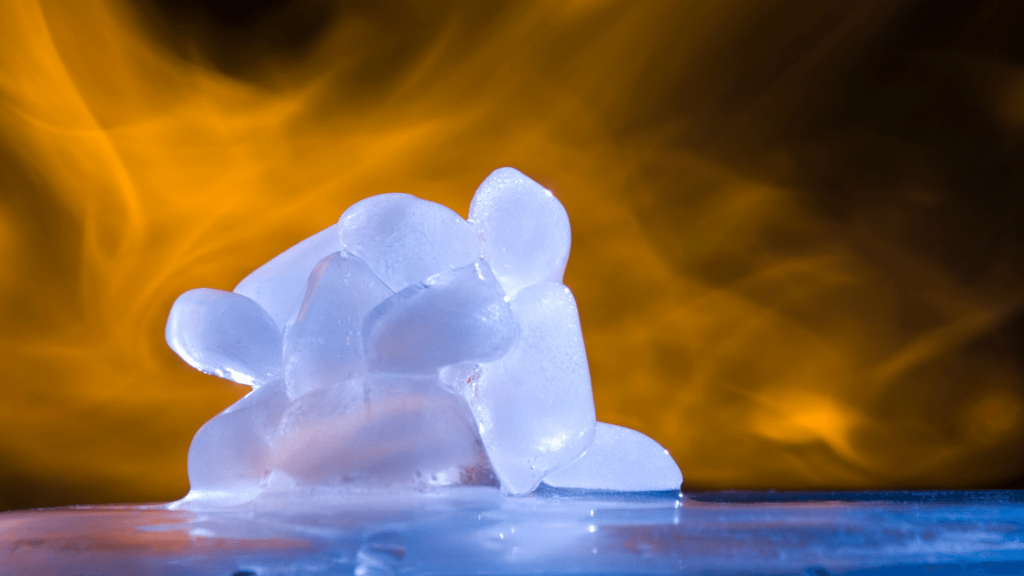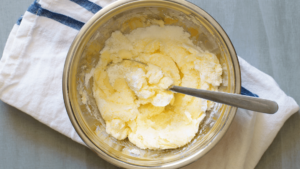What Is the Difference Between Heat and Ice Therapy?

Depending on what time of year it is, you probably love one of these guys and hate the other.
But regardless of who you hate at this given moment, both heat and ice therapy comes with year-round health benefits! Some of their benefits overlap, while others are unique to just one of those elements. So let’s talk about them!
When Should You Use Heat Therapy?
Heat, the more calming element in most cases, softens tense muscles and soothes the mind. When applied to the body, a warm pack improves blood flow. And what does improved circulation do? It sends nutrients and oxygen to the muscles and bones, reducing their pain and enhancing their movement. Just leave a hot pack on your back for 10-15 minutes and be amazed. Your muscles, which previously felt like bags of rocks, will now feel like softened butter.
This is your bicep on heat therapy.
Aside from converting damaged tissue into sweet butter, what else can heat do for your body? Well, I kind of touched base on everything. But I’ll reiterate them below in case you didn’t actually read this section and were just looking for the bullet points.
- Relieves muscular pain and tightness
- Reduces joint pain
- Improves circulation
- Improves mood and alleviates stress
- Increases flexibility
Hot packs, heating pads, and warmed towelettes are just a few easy ways to get your heat therapy. But you know an equipment-free way to obtain it? Work out! Good old exercise will warm the muscles, making them extra pliable for a post-workout stretch! (That’s why you should always stretch after you work out as opposed to before.) But you know what you should follow that self-made heat therapy with?… Ice! And I’ll explain why at the end of the next section.
When Should You Use Ice Therapy?
Unlike a sleep-inducing warmth, ice therapy promotes alertness. If you’ve ever taken a shower before, this doesn’t come as news to you. It’s hard to tear yourself away from the warm steam of a hot shower, but you’re ready to dart out of a cold shower faster than a caffeinated cheetah who’s late for a meeting.
“Gah! Why did I take a warm shower this morning?!”
Vasoconstriction, the thinning of blood vessels, gets kicked into gear when your body is cold. Your blood has to move at a high pressure when this takes place, which requires more energy and thus wakes your body up. Other than an energy boost, what else does ice have to offer you? As with the last section, I’ll start the bullet points with the benefits I already talked about.
- Boosts energy
- Reduces inflammation
- Relieves pain
- Decreases muscle spasms and cramping
Ok, so I previously talked about the do-it-yourself heat therapy you achieve by working out. While the heat is great for making the muscles pliable, it also increases swelling and inflammation. If that swelling and inflammation goes ignored, those muscles are going to tighten up fairly soon. That’s where ice therapy comes to the rescue! After a warming workout, apply ice to the body to reduce swelling and inflammation. Let the cold do its work!
Things to Consider
As is the case for pretty much everything ever, you don’t want to overdo heat or ice therapy. To state the obvious, burns and frostbite are no joke. But heat and ice have other contraindications that one should keep in mind too. If you have any of the following conditions, talk to your physician before trying one or both of these treatments.
- Edema – While ice is generally considered safe, heat can increase swelling and inflammation.
- Bleeding disorders – Due to the effects heat and ice have on blood flow, bleeding disorders can be disrupted by either form of therapy.
- Pregnancy – Overheating can be dangerous to the unborn fetus, especially in the first trimester.
- Poor circulation – Ice constricts blood vessels and should be avoided by those with dangerously low blood pressure.
- Neuropathy – It’s hard (if not impossible) to determine when too much heat or cold is being applied to the body.
- Dementia – A patient with dementia may have trouble perceiving or communicating when the body is freezing or overheating.
- Open wounds
Now You Know the Differences between Heat and Ice!
Get yourself a hot pack and a cold pack and use as needed! And at your next appointment, ask your chiropractor or massage therapist about heat therapy techniques used in the office. The ultrasound machine is pretty cool!

Katrina Jenkins
Author, Licensed Massage Therapist
Katrina Jenkins graduated from Towson University in 2013 with a Bachelor’s Degree in Health Science and worked as a nurse’s aide briefly before pursuing her true passion. She graduated from the Massage Therapy Institute of Colorado in April 2016 with honors and completed the Touch of Healers Scholarship Program the following summer. She has been a part of the Moyer Total Wellness Team since the summer of 2017.
Resources
Brazier, Yvette. “Heat and Cold Treatment: Which Is Best?” Www.Medicalnewstoday.com, 25 July 2017, www.medicalnewstoday.com/articles/29108.
Hecht, Marjorie. “How to Increase Circulation in Your Legs with and Without Exercise.” Healthline, 24 Oct. 2019, www.healthline.com/health/how-to-increase-circulation-in-legs. Accessed 3 Dec. 2020.
Khatri, MD, Minesh. “When Should I Use Heat or Ice for Pain?” WebMD, 30 May 2019, www.webmd.com/pain-management/when-use-heat-ice#1.
Photo Credit
Canva by AleksandarPetrovic from Getty Images
Canva by InaTs from Getty Images
Canva by slowmotiongli from Getty Images


